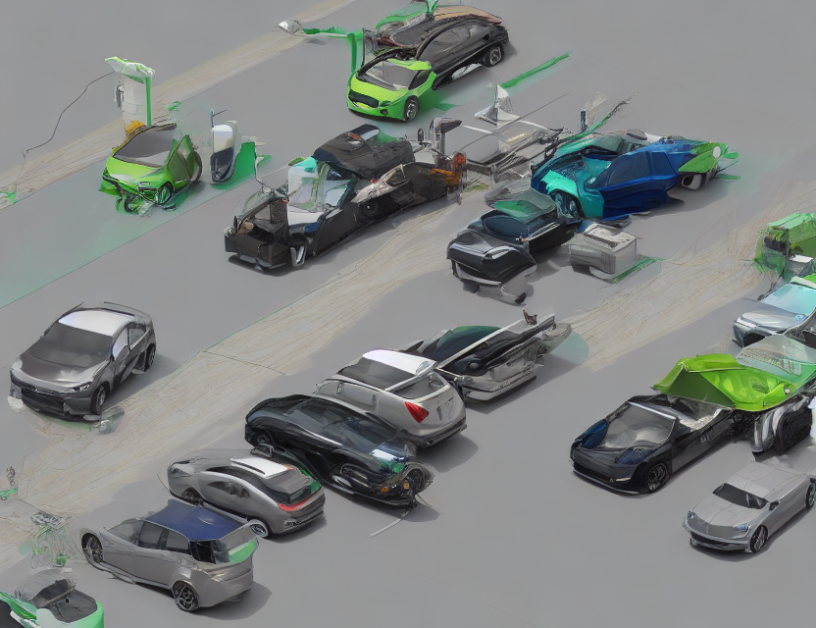In this article, we will delve into the latest research and technologies in electrifying transportation, providing a comprehensive overview of the various aspects involved. We will demystify complex concepts by using everyday language and engaging metaphors to help readers understand the topic better.
Introduction
Electrification of transportation is a rapidly growing field that seeks to replace traditional fossil fuel-based vehicles with electric ones. This transition has numerous benefits, including reduced greenhouse gas emissions, improved air quality, and decreased dependence on fossil fuels. In this article, we will explore the different types of electric vehicles (EVs), battery technologies, and charging infrastructure, as well as the challenges and future prospects of electrification.
Types of Electric Vehicles (EVs)
There are several types of EVs currently available in the market, each with its unique characteristics and advantages. These include:
- Battery Electric Vehicles (BEVs): These vehicles run solely on electricity stored in batteries and have no range extender. The most popular BEV is the Tesla Model S.
- Plug-in Hybrid Electric Vehicles (PHEVs): These vehicles have both an electric motor and a range extender, typically a gasoline engine. They can be charged from an external power source, but also have a limited amount of battery energy that can be used when the engine is running.
- Hybrid Electric Vehicles (HEVs): These vehicles use a combination of electric and gasoline power to improve fuel efficiency. They do not have a separate battery pack and therefore cannot be charged from an external source.
Battery Technologies
The performance and range of EVs are highly dependent on the type of battery used. The most commonly used batteries in EVs are:
- Lithium-ion (Li-ion) batteries: These are the most common and popular batteries used in EVs due to their high energy density, long lifespan, and low self-discharge rate. They have a range of around 200-300 miles on a single charge.
- Nickel-metal hydride (NiMH) batteries: These are less expensive than Li-ion batteries but have a lower energy density and shorter lifespan. They are commonly used in hybrid vehicles.
- Lead-acid batteries: These are the least expensive option but have a lower energy density and longer charging times. They are not commonly used in EVs due to their limited range and slow charging time.
Charging Infrastructure
The development of EVs is closely linked to the availability and accessibility of charging infrastructure. There are several types of charging methods, including:
- Level 1 (120V): This method uses a standard household outlet and takes around 24 hours to charge a vehicle.
- Level 2 (240V): This method requires a dedicated 240V outlet and can charge a vehicle in around 8-10 hours.
- DC Fast Charging: This method uses a high-power DC charger and can charge a vehicle to 80% in around 30 minutes.
Future Prospects
The future of electrification looks promising, with many countries investing heavily in EV infrastructure and technology. Some of the trends and developments expected in the near future include:
- Increased battery energy density: As batteries improve, EVs will have longer ranges and faster charging times.
- Reduced costs: As the market for EVs grows, costs are expected to decrease due to economies of scale.
- Improved charging infrastructure: The development of fast-charging stations and the expansion of charging networks will make it easier for people to own and use EVs.
- Increased adoption of autonomous vehicles: Electric vehicles are well-suited for autonomous driving due to their stability and control, making them an attractive option for self-driving cars.
Conclusion
Electrification of transportation is a rapidly evolving field with numerous benefits, including reduced greenhouse gas emissions, improved air quality, and decreased dependence on fossil fuels. In this article, we have provided a comprehensive overview of the latest research and technologies in electrifying transportation, demystifying complex concepts by using everyday language and engaging metaphors. We hope this summary helps readers understand the topic better and appreciate the importance of electrification in the transition to a more sustainable future.



